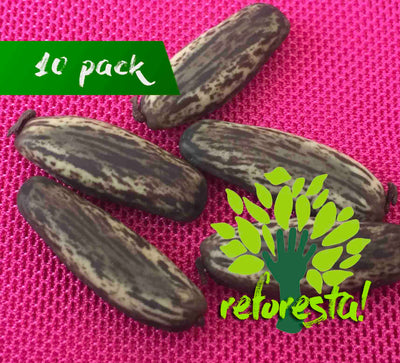Paulownia Shan Tong (Fortunei x Tomentosa) -20°
Selective breeding of paulownia in the 1970s and 1980s focused primarily on levels of growth and adaptability. Over time, the comprehensive use of Chinese paulownia wood and the continuous improvement and development of processing technologies made it clear that the previous generation of clones could not meet the requirements of the time.
Current genetic improvement not only focuses on the levels of growth and adaptability, but also on improving the quality of the wood and solving the problems derived from its processing and use.
Shantong paulownia is the new generation of artificially crossed paulownia species that were cultivated during 11 years of research. They were obtained by artificially crossing P. tomentosa with P. Fortunei for selective improvements in obtaining seeds. This achievement has been recognized by China's Shanxi Forest Science Department, awarded the Shanxi Science Prize for its results, included in the national scientific and technological achievements. relevance around the world.
Shan Tong Features and Benefits
Shan Tong is the newest and improved version of paulownia bred in China, which has the following advantages over other types of paulownia: fast growth, strong resistance to disease and insect pests, higher resistance to drought and cold, production of a large volume of wood, good quality, saving of the occupied land area due to a narrow crown, exceptional adaptability, and so on.
High growth rates
According to the comparative test carried out in forests and cultivated under the same conditions for seven years, the average volume of an individual Shan Tong is greater than No. 1 Yuza (artificially crossed hybrid according to the parameters of the old generation of clones) in a 63.78%. In the semi-arid regions of western China, the diameter of Shan Tong, cultivated for seven years, reached 35 centimeters. Its growth rate, especially in the initial period is in the highest positions. A high growth rate will shorten the felling period, and at the same time increase the volume of wood obtained.
High resistance to diseases and insect pests
Resistance to disease and insect pests is an important trait for fast-growing and highly productive paulownia forests. The results of field research on natural infection show that the infection rate of "witch's broom" in a Shan Tong specimen, cultivated for seven years, is significantly lower than in other species of paulownia.
High resistance to drought and cold
Tolerance to natural conditions is another important indicator in the selection of paulownia varieties. The types of paulownia with great resistance to drought and frost have a greater capacity to resist climatic changes, presenting greater growth, better survival and performance. According to an experimental observation, Shan Tong showed that it can withstand both low temperatures down to -28ºC and high temperatures up to 42ºC.
Large volume of wood obtained
The stem of Shan Tong is straight, tall, slender and of good quality. Depending on the growing conditions and methods, the height of the paulownia stem can reach 6-9 meters, and its diameter can reach 4-10 cm in the first year after pruning. A seven-year-old Shan Tong specimen can reach 0.35-0.6 m3.
Excellent quality of wood
The excellent quality of paulownia wood plays a decisive role in the use and economic benefit. The experimental results show that the mechanical and physical properties of Shan Tong wood are better than those of its predecessors, which has reached and exceeded the international quality standard for wood. In a short time, you can get more quality wood, which is a positive indicator for industrial purposes.
Planting area savings
Depending on the type of paulownia, its development characteristics and the shape of the crown are different. The crowns of the different types of paulownia are divided into three categories: narrow, medium and wide crown. The width of the narrow crown is 40% smaller than that of the wide crown. Shan Tong crown is narrow / medium type which will save more than 40% of land, allowing us to use 4x4m and 4x3m planting frames.
Adaptation to climatic conditions
The experience of many years has shown that Shan Tong can grow in both North and South China, as well as similar areas of foreign countries. In recent years, the United States, Germany, Bulgaria, Iran, Nepal, Vietnam, Burma, Laos, Thailand, Indonesia, Uganda and other countries have successfully introduced this wonderful variety. Shan Tong can grow in different climatic and soil conditions, winning thanks to its great adaptability, since it will save a large amount of human and material resources for reforestation work, reduce the total cost of afforestation and increase profitability.








